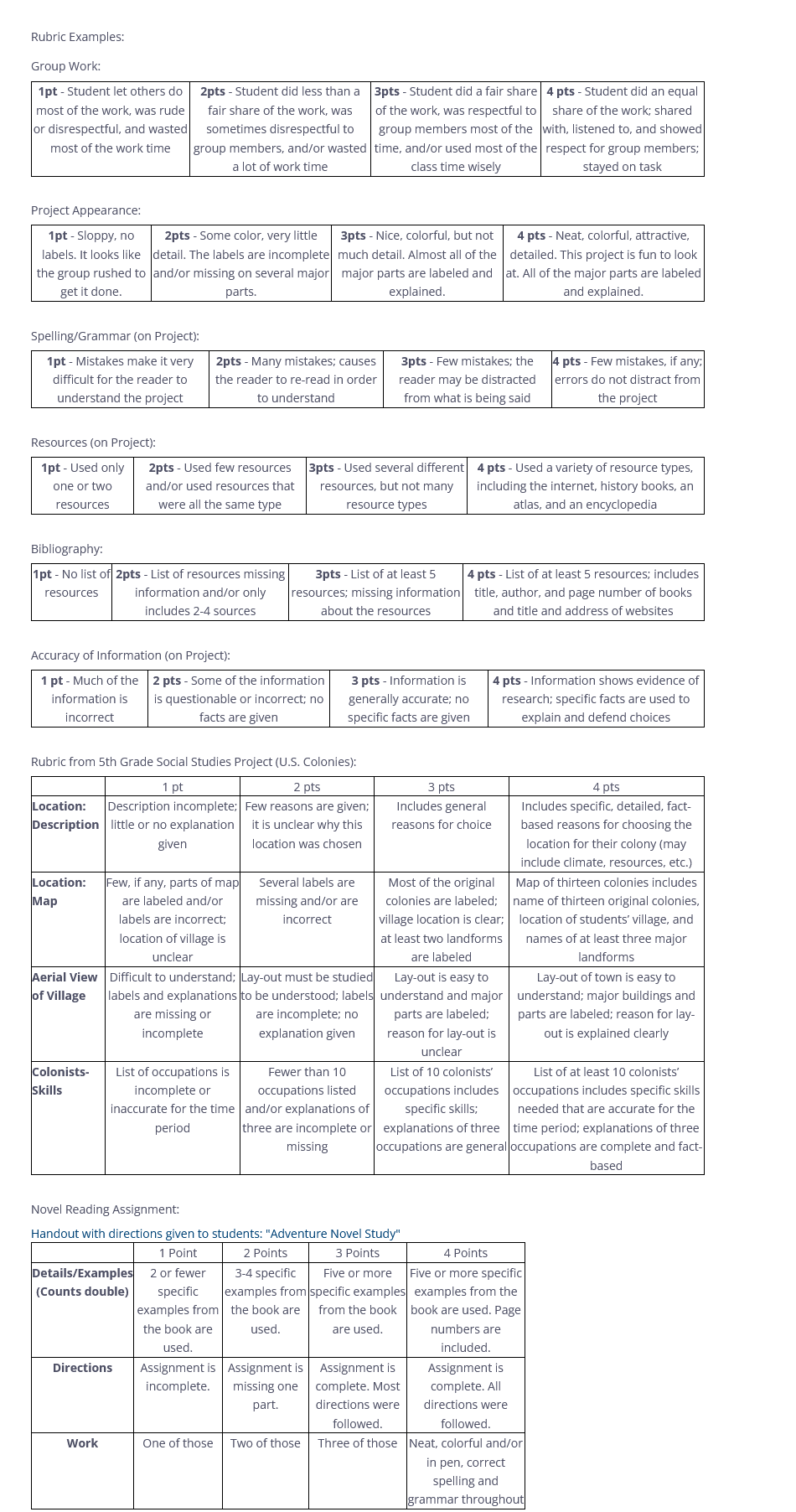Rubrics
Effective Assessment is Specific, Timely, and Based on Clear Expectations
Benefits of Using Rubrics:
1. Focus on What's Most Important
- Decide: What skills, concepts or facts do you want student to understand at the end of the assignment?
- Weight the parts of the rubric so that what is most important for the students to learn is the largest part of the grade
- For example, if the content (facts and information) of a project is the focus (what you want the students to spend most of their time on), then most of the rubric points should be on content skills, with fewer points, if any, used for other skills such as neatness and spelling
- For example, if the content (facts and information) of a project is the focus (what you want the students to spend most of their time on), then most of the rubric points should be on content skills, with fewer points, if any, used for other skills such as neatness and spelling
2. Provide Clear Expectations
- Let the students know exactly what they are expected to learn and/or do
- Give them a target to aim toward
3. Grade Objectively
- Clear expectations make it easier to grade consistently and with less subjection
- Once the rubric is established, grading often becomes faster and easier
4. Effective Student Self-Evaluation
- Students can use the rubric to assess their own work, resulting in a better understanding of what they have accomplished and what they can work on for next time
5. Track Progress
- Be able to identify specific improvements within a concept or skill

